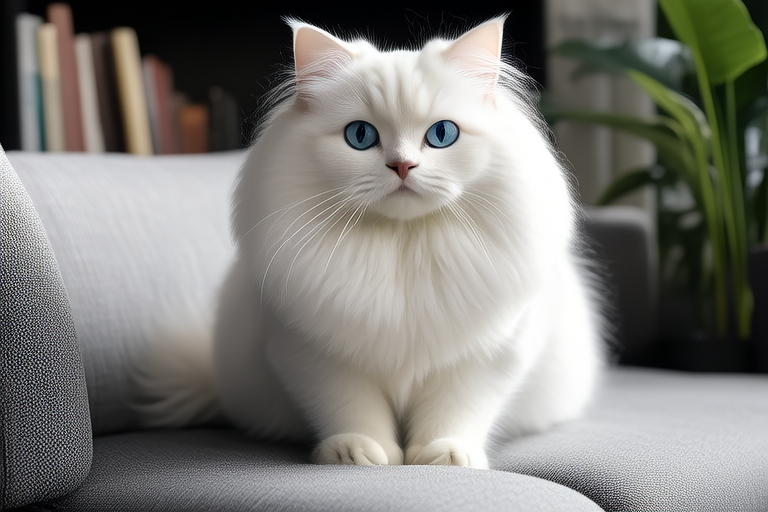Adopting a Persian Cat: What You Need to Know Before Bringing Them Home
Welcome to the world of Persian cats! Known for their striking appearance and gentle demeanor, these long-haired beauties have captured the hearts of many pet lovers. However, before you bring one into your home, it’s essential to understand their unique characteristics, care requirements, and lifestyle needs. This guide will walk you through everything you need to know about adopting a Persian cat.
Persian Cat Characteristics
Persians are renowned for their luxurious, dense coats that come in a variety of colors and patterns. Their large, round eyes and short, snub noses give them a distinct and often regal appearance. These cats are generally calm and affectionate, making them excellent companions for families and individuals alike. They enjoy lounging around and are known for their gentle and patient nature, which can make them particularly appealing to first-time cat owners.
One thing to note is that Persian cats have a brachycephalic face, which means they have shorter skulls compared to other breeds. While this gives them their signature look, it can also lead to some health issues, such as breathing difficulties or eye problems. It’s important to be aware of these potential challenges when considering adopting a Persian cat.
Grooming Needs
The lush coat of a Persian cat requires regular grooming to keep it healthy and free from mats. Daily brushing is recommended to prevent tangles and remove loose hair. Use a slicker brush and a comb to ensure thorough cleaning. Additionally, bathing your Persian every few months can help manage excess shedding and keep their coat shiny. Always use a cat-specific shampoo and conditioner to avoid irritating their skin.
Aside from their coat, Persian cats also require attention to their facial hygiene. Due to their short noses and wide-set eyes, Persians are prone to tear staining and facial hair matting. Regularly wiping their faces with a damp cloth and trimming any long hairs around the eyes can help keep them clean and comfortable.
Dietary Requirements
Providing a balanced diet is crucial for maintaining your Persian cat’s health. High-quality commercial cat food, either wet or dry, formulated specifically for indoor cats or those with sensitive stomachs, is usually sufficient. Look for foods rich in protein and low in fillers. Some Persians may benefit from a diet that supports kidney health due to their predisposition to certain health conditions.
Ensure fresh water is always available and consider using a water fountain to encourage drinking, especially if your cat is prone to dehydration. Avoid feeding your Persian table scraps, as these can upset their digestive system and contribute to obesity.
Health Considerations
Persian cats are susceptible to several health issues, including respiratory problems, urinary tract infections, and polycystic kidney disease (PKD). Regular veterinary check-ups are essential to catch and address any potential health concerns early. Early signs of illness might include changes in appetite, unusual lethargy, or difficulty breathing.
Vaccinations and parasite prevention are also critical components of your Persian’s healthcare routine. Discuss with your veterinarian the best vaccination schedule and preventive treatments for fleas, ticks, and worms. Additionally, consider genetic testing if you’re planning to breed your Persian, as PKD is a hereditary condition.
Suitable Living Environments
Persian cats thrive in calm, quiet homes where they can relax without too much disturbance. They are not typically outdoor cats due to their delicate coats and susceptibility to environmental stressors. Indoor living is ideal, providing them with a safe space to explore and play.
Create a cozy environment by setting up soft beds, scratching posts, and interactive toys. Consider placing a window perch near a sunny spot so your Persian can enjoy bird-watching. Ensure your home is secure, with no small objects that could pose choking hazards or toxic plants that could cause harm.
Cost Implications
Adopting a Persian cat comes with various costs, from initial adoption fees to ongoing expenses. Adoption fees typically range from $100 to $300, depending on the shelter or breeder. Purchasing from a reputable breeder may cost more, but it ensures you’re getting a healthy kitten with proper documentation.
Ongoing costs include food, litter, grooming supplies, toys, and veterinary care. Expect to spend approximately $1,500 to $3,000 annually on these essentials. Health insurance can provide financial protection against unexpected medical bills, potentially saving thousands in the long run.
Tips for Acclimating a New Persian Cat to Your Home
Bringing a new cat into your home can be both exciting and challenging. Here are some tips to help your Persian settle in:
- Create a Safe Space: Provide a quiet room with all necessary amenities, such as food, water, litter box, and a comfortable bed. This allows your cat to adjust at their own pace.
- Gradual Introduction: Introduce your Persian to other pets gradually, allowing them to sniff each other under a door or through a baby gate before full interaction.
- Establish Routines: Cats thrive on consistency. Set regular feeding times and establish a predictable daily routine to help your Persian feel secure.
- Encourage Play: Spend time playing with your cat to bond and stimulate their minds and bodies. Interactive toys and laser pointers are great options.
- Be Patient: Every cat adjusts differently. Give your Persian time to get comfortable in their new surroundings and trust their instincts.
Adopting a Persian cat is a rewarding experience, but it requires commitment and understanding of their unique needs. By preparing yourself with knowledge about their characteristics, grooming, dietary requirements, health considerations, suitable living environments, and cost implications, you’ll be well-equipped to provide your new feline friend with a loving and nurturing home.
